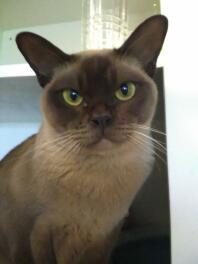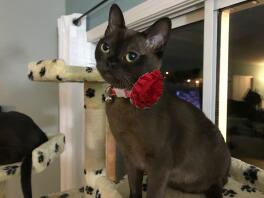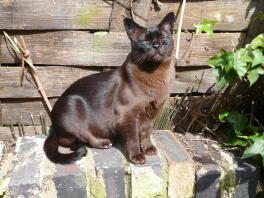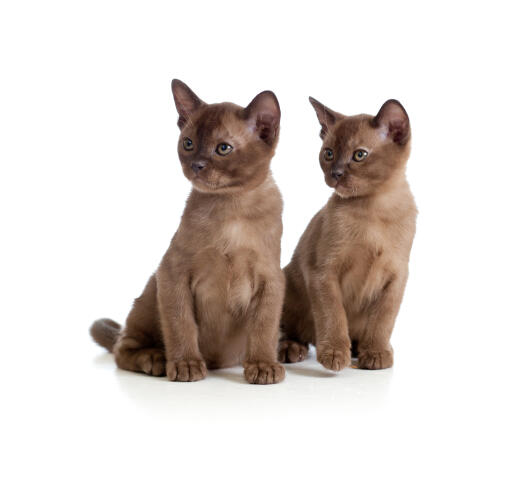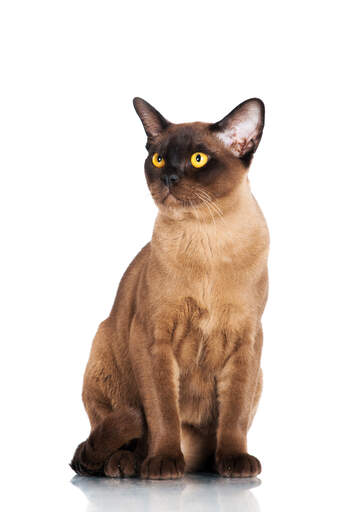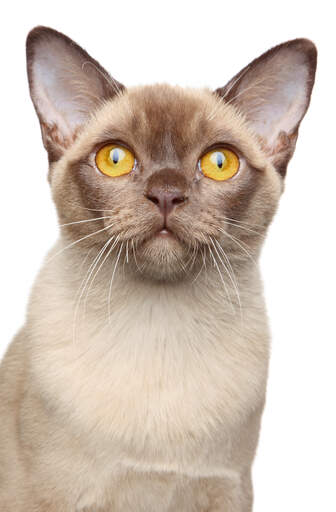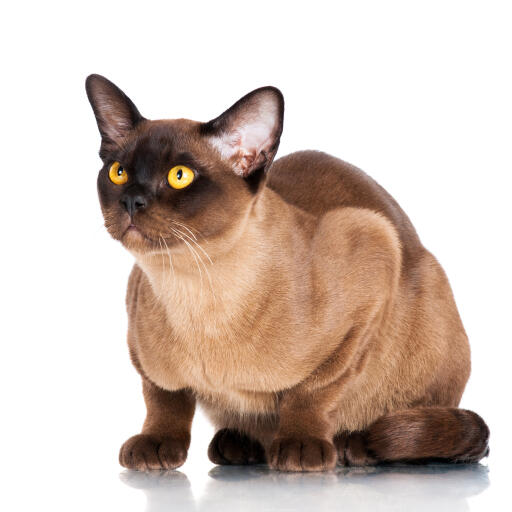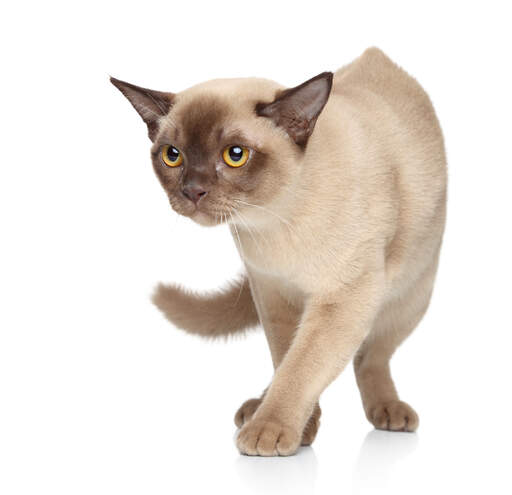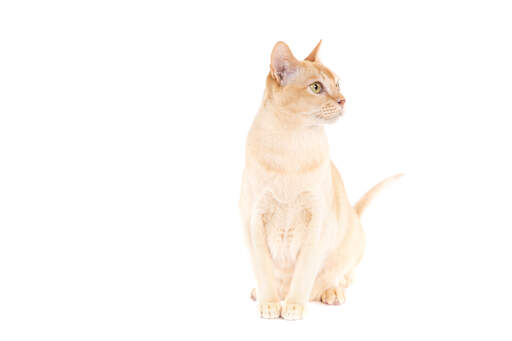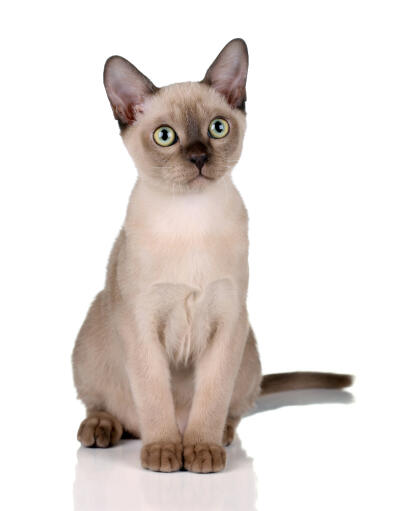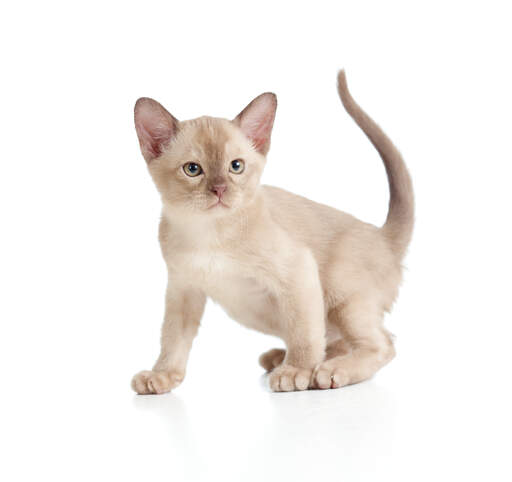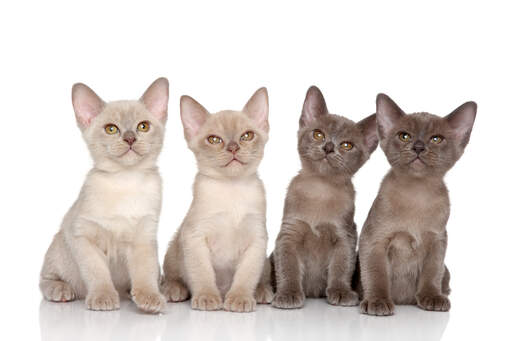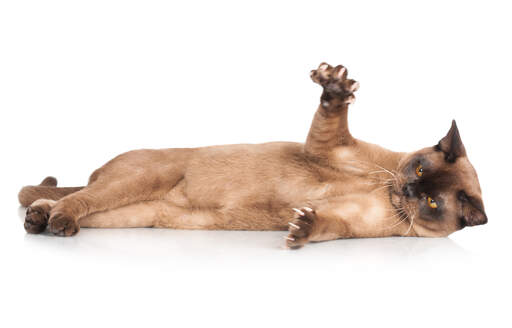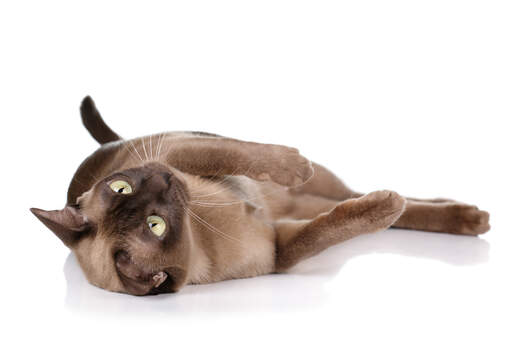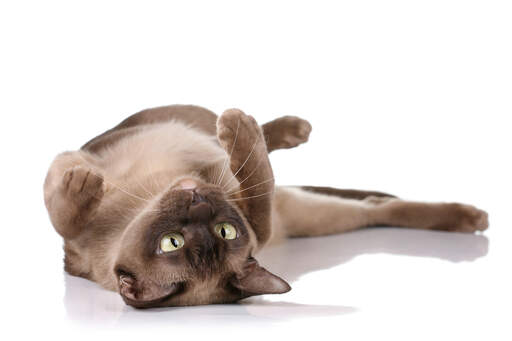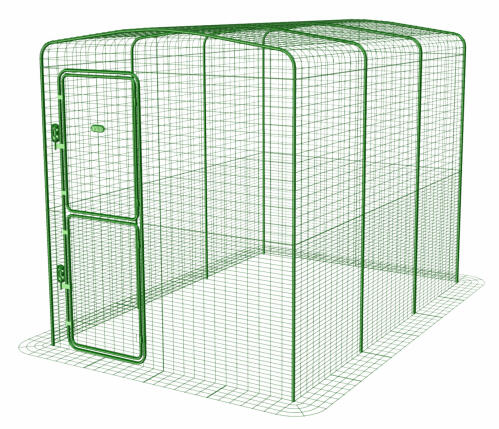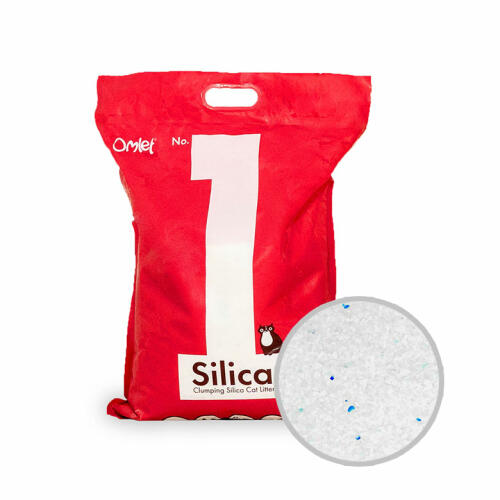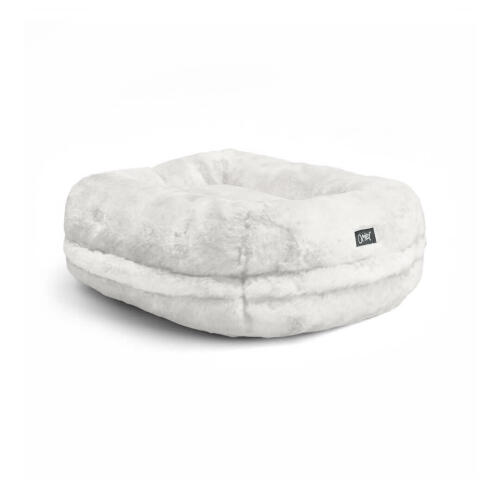Burma-Katze












Geschichte
The Burmese cat breed was developed in 1930 from a cat named ‘Wong Mau’. Wong Mau was brought back from Asia to San Francisco where she was given to Dr Joseph Thompson.Thompson bred Wong Mau with a seal point Siamese cat with the aim to produce a breed that had her distinguishing brown coat, and compact but dainty body similar to that of a Siamese cat. Wong Mau was then bred with her son again to lay the foundations of the breed. By 1954 the Cat Fanciers Association officially recognised the Burmese cat as a breed. This was after previously recognising the breed but then suspending breed recognition.
In the UK by 1952 breeders had successfully produced several generations of true Burmese cats. The International Cat Association officially recognised the breed in June 1979.
Verhalten
Burmese cats are very friendly, sweet natured cats who thrive off attention. This cat is known for being vocal much like their Siamese cousins, however their voice is softer. Burmese cats can be attention seeking and will become lonely if left by themselves for too long. This is a great pet for a family as they get along brilliantly with children and are very tolerant. These cats are full of character and life with them will never be dull.
Varietäten
Self and tortie colours include brown, sable, cream, lilac, red, and blue.
Einzelheiten zur Rasse
- Status: Common
- Herkunft: Possibly Burma
- Ungefährer Entstehungszeitraum: 1930s
- Haarlänge: Kurzhaarig
- Aktivitätsgrad: Hoch
- Vokalität: Hoch
- Child friendly: Kinderfreundlich
- Intelligenz:
- Verspieltheit: Verspielt
- Pflegeanforderungen: Weniger als einmal pro Woche
- Produktgewicht: 3.5 - 6.5kg
- Version: Größe M
- Allergy friendly: Ja
- Hauskatze oder Freiläufer: Outdoor Cat
- Verträglichkeit mit anderen Haustieren:
- Soziale Bedürfnisse:
Fotos der Rasse
